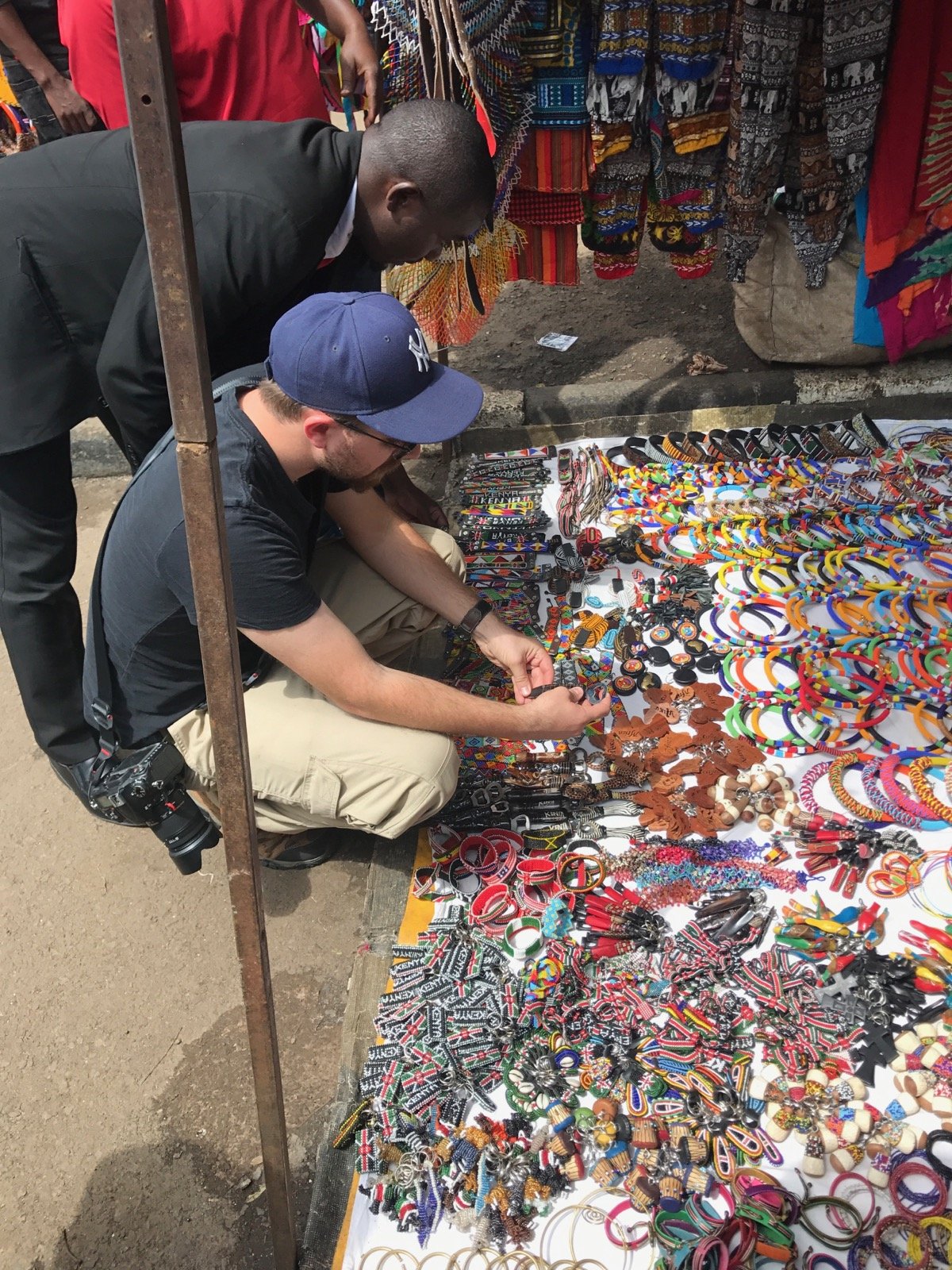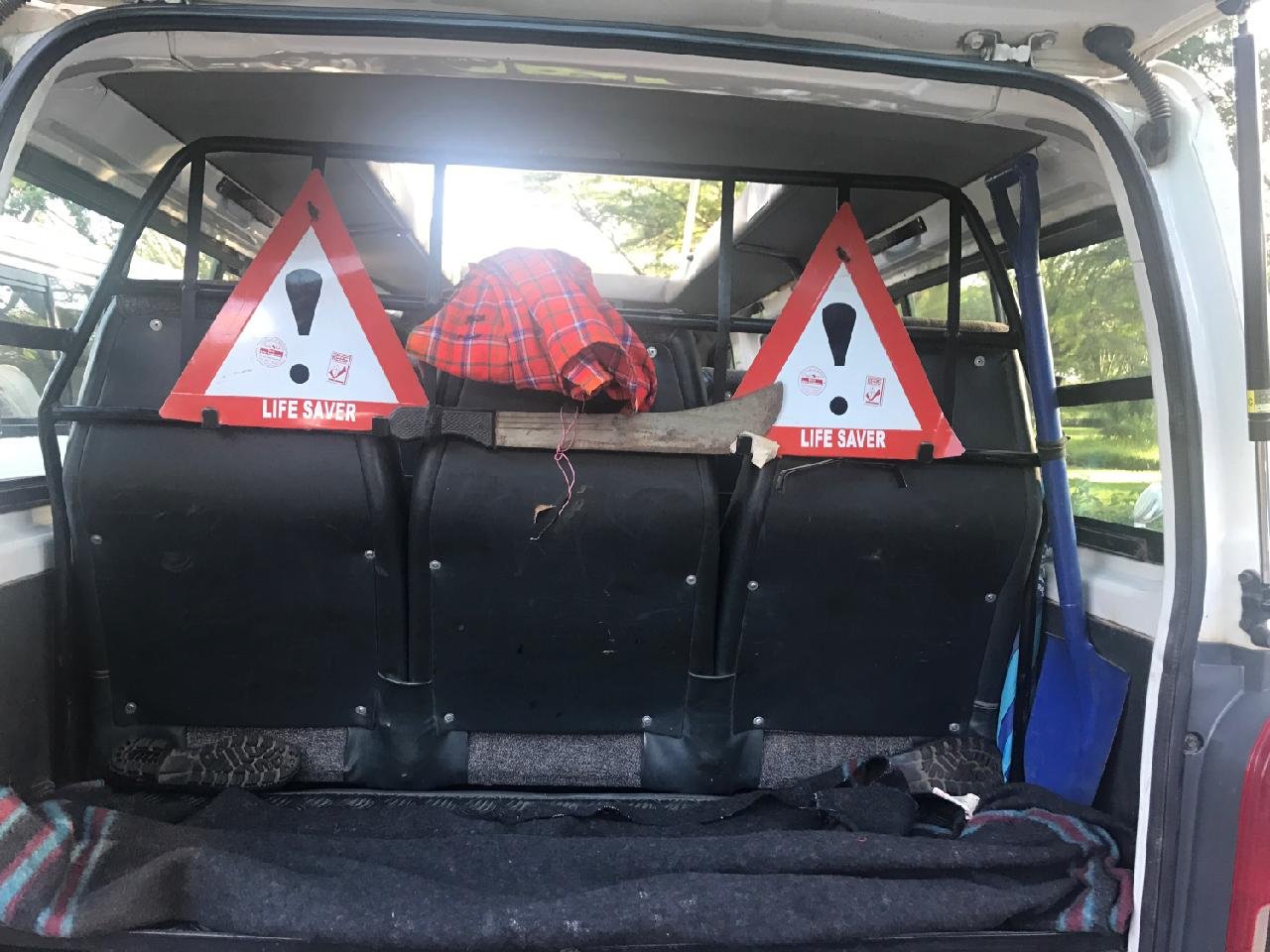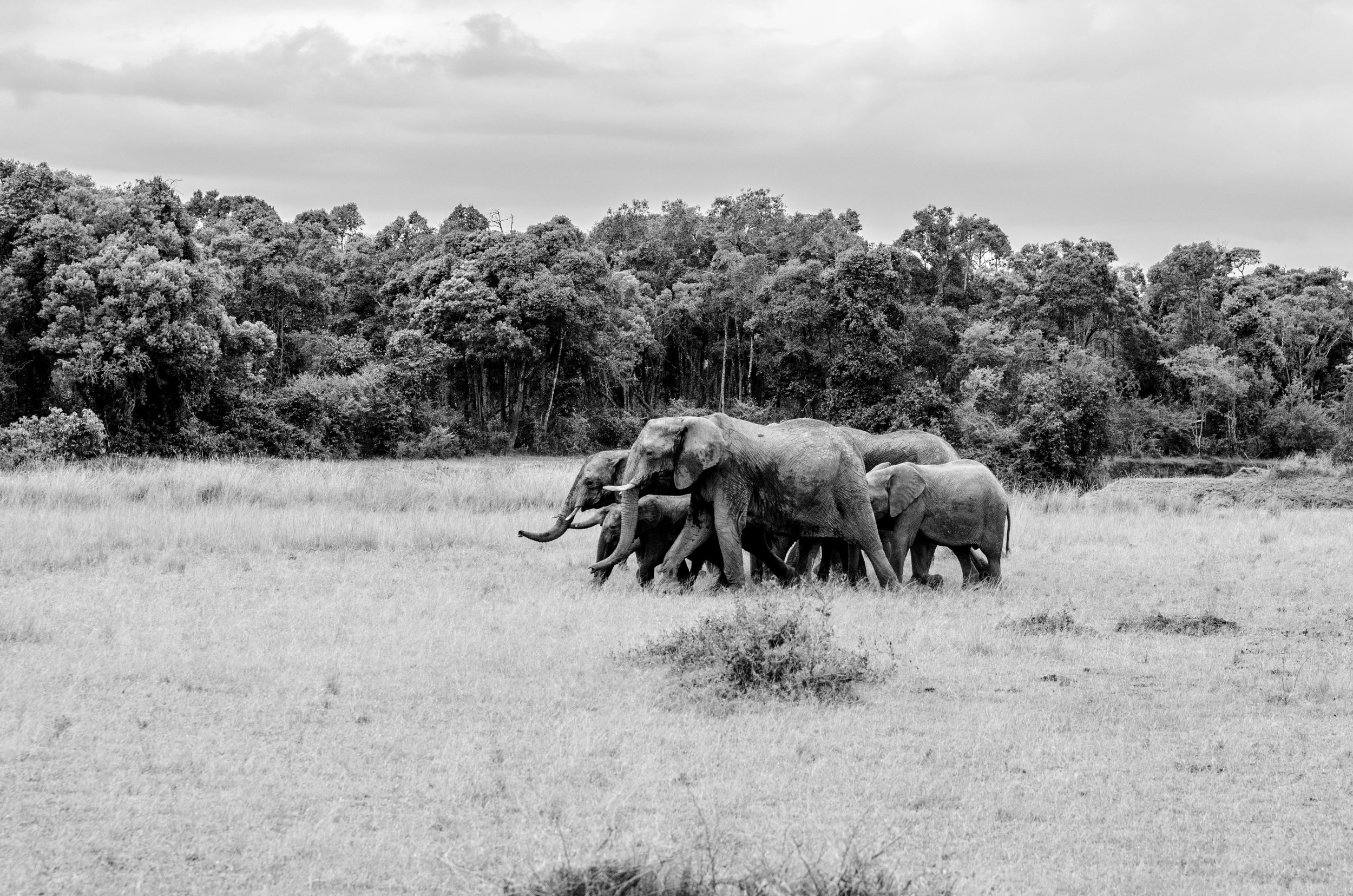Kenya 2019: Hindsight
Little buddy. Maasai Mara.
Well, we made it! What a trip! Thanks for reading along on our adventure. Here we'll cover some of our perceptions before and after the trip, as well as offer some recommendations if you've been inspired by our adventure. The photos in this installment are a random assortment of some more candid shots that we took.
Perceptions
Africa, to many Americans, is still the dark continent. It’s perceived as a land of dangerous people, treacherous landscapes, and terrible disease. This stereotype is perpetuated in movies, TV shows, and, in part, by our own government. As we mentioned previously, the State Department has warnings about traveling to these places. They note potential robbery, carjackings, violence, and terror attacks. In January of last year, terrorists killed 21 people in the DusitD2 hotel in downtown Nairobi. The President even once remarked that countries in Africa are “shitholes”. During our planning, Ebola was starting to take a larger toll in the eastern part of the DRC, south of where I was going. The list of vaccinations that were recommended for travel was lengthy, adding to our concerns about our health while overseas.
There is a false belief amongst many adults in the US that Africa is a country, full of one kind of people and that those people are not as technologically advanced as we are. Africa, as a reminder, is an entire continent with 54 individual countries. Although on most map projections, Africa appears small, the US, China, India, and Europe could fit within its borders. Kenya is a little smaller than the state of Texas, with an equivalently smaller population, but still highly diverse.
All of these perceptions and events led to some understandable consternation for us and for our families prior to our trip. However, when we arrived, we found helpful and friendly people, no different than you would find in most US cities. The people were almost overly helpful: carrying bags, opening doors, and offering services. This may be genuine hospitality or it may be simply because we are perceived as wealthy Americans traveling overseas.
Sisi ni marafiki!
Thunder Goose (Ostrich). Maasai Mara.
In our travels, we’ve found that most people want just a few things: some family and friends to comfort them, a good drink in their hand, some hearty laughs, and above all else, some good food to eat. I found this to be the case with all of the people I spent time with on my long trip. The staff at the guest house in Uganda knew of my dire condition and were extremely helpful and concerned for my well-being. They helped me get through the worst illness I have ever had and made me feel less alone. Word spread quickly across international borders, and when I arrived in the DRC, many people asked how I was feeling and offered their assistance should I need anything. After work each night, we would retreat to the bar/grill in camp and feast upon local foods and drink some Tusker or White Cap, trading mining stories and accompanied by some good laughs. In Kenya, we got to know our guides on a personal level and, unsurprisingly, found that we had many of the same interests when it came to photography and wildlife, as well as our families. We thoroughly enjoyed their company while we ate breakfast and lunch in the truck, and I wish we had had dinner or beers with them more frequently.
Kenya is still developing, but is also very modern with new green infrastructure projects, like rails and ports. Road upgrades were ongoing across the country. The slums of northwest Nairobi and some of what we saw in Naivasha, Gil Gil, and Narok highlighted the level of poverty outside the capital. But outside those towns, we found truly stunning landscapes. Rolling hills, rugged mountains, foggy forests, and wide-open savannas greeted us as we drove across the country. The amount of natural wildlife was more than we could have imagined, far more than Yellowstone can offer by an order of magnitude. Kenya's travel slogan is #magicalkenya and it's pretty accurate.
Cheetah mlem. Maasai Mara.
Martial Eagle. Lake Nakuru.
This is Africa and African Time
There are two phrases that we came to know on this trip. The first is: "This is Africa". It's used to explain away some of the difficulties that Africa has in places where countries are still developing, like corruption or interruption of services. The other one I learned, particularly in the DRC and Uganda was "African Time". While in Entebbe looking for medical assistance, we stopped at a doctor's office which had opened at 8 am. It was nearly 9 when we arrived and the doctor had not yet come in for the day. Leaving Entebbe for the DRC, our flight was scheduled to leave at 7, but was pushed back closer to 11 as we waited for the pilots to be ready. Some coworkers noted that it was no surprise because, after all, this is Africa. While Uganda and the DRC were less than punctual, the folks in Kenya were on-time.
Our Gear and Post-Processing
Our excruciating level of planning and detail when it came to the gear was well worth the effort. We shot more than 11,000 pictures in the span of six days. When you break that down, each of us was shooting one picture every 75 seconds.
We had done a fair bit of reading on what gear to bring from other pros. A wide array of lenses was most important, but unlike some of the articles we read, we carried enough camera bodies to prevent having to switch lenses. That worked very well to our advantage when it came to shooting as a team. We were able to shoot continuously on multiple lenses without having to worry about swapping camera bodies.
The decision to go with the 600 mm was a tough one. We already had a 150-600 mm in our arsenal, so we were considering the 400 mm, 600 mm, and an 800 mm. An 800 mm felt like it would be too much zoom at potentially close range. If we threw on the 1.4x teleconverter, we’d be photographing a gnat’s ass at 100 yards, so we started to look at the 400 mm and 600 mm. Ultimately it came down to “go big or go home” and we were not going home. The lens has super-fast focus and is crystal sharp, so it’s perfect for wildlife.
Selecting souvenirs at the Maasai Market, Nairobi.
Evening commute for people and animals alike.
Our experience with lensprotogo.com for this trip was positive, so Greg went back to them to rent lenses for his Philippines trip. The site offers reasonable pricing for lens rentals. The rental set us back $1,000 for the trip and it’s the second best thing we paid for after the safari booking. If you’re looking to buy lenses, bodies, or other camera gear, consider renting them first from sites like lensprotogo.com or borrowlenses.com. It gives you the opportunity to try out the equipment before shelling out the money.
The downside to digital photography of course is the storage and editing. Not every picture we took made the cut. So each night we would download the full batch, cull the herd, and save the remainder. Having multiple backups is important. We had one computer and two external hard drives which carried everything. After all of our field cuts, we ended up with about 7,500 pictures, and dropped that to about 5,000 through the editing process.
We shoot in RAW format for everything since we like the control it provides on the back end for edits, but we’re not really big on heavily altering our images. We mostly edit for exposure, sharpness, and some tonal adjustments. We greatly appreciate the simplicity and power that black and white images can provide and so we’re always on the lookout for an image that may be more impactful without color.
There’s a fine line between digital photography and digital arts these days, and while we can certainly appreciate those kinds of images, we prefer to let our photographs speak truth to the scenes we shoot.
Details inside the dining hall at Keekorok.
Close Encounters of the Cheetah Kind
Recommendations.
If you’re looking to take a safari, here are our recommendations to make your trip successful.
Shop around
There are lots of options and outfitters offering a wide variety of packages across the continent, so there should be no shortage of opportunities for a good safari. While we can’t vouch for any of the other outfitters, our experience with Porini was excellent. They offer many packages throughout Kenya with a high degree of flexibility. We added an extra day in the Mara and opted for the 4x4 truck package. We’re glad that we took the 4x4 option instead of the van. It gave us access to places the vans cannot reach due to their low clearance. It also had a more natural safari feel. While we were initially disappointed to see a fully enclosed vehicle, we found that we preferred it to some of the open-sided trucks we saw in the Mara as it allowed us to stash cameras safely throughout the truck and the opportunity to stand up more regularly. Porini did offer early morning hot air balloon rides, but we did not partake in that on this trip.
Don’t be afraid to ask the outfitter what other activities can be arranged. Our visit to the Maasai village was not something that was listed on the website, but we were able to request it through our guides. Odds are that the outfitter has an extensive knowledge of local activities for all budgets and can recommend them based on a quick survey of your preferences. In addition, they can provide travel advice for newcomers on the visa process, flights, airports, and hotels. They are usually more than willing to accommodate and help you.
We’d really love to work with Lenny and David again. We built good rapport with them over the course of the week that we were there and it felt like more of a team than as client and guide. It's important to get to know your guides on a personal and professional level.
Determine the time of year that you want to visit. Summer is great for the migrations, but it’s also heavy tourist season, and bookings can fill up quickly. We were extremely fortunate that there were still accommodations available on such short notice, as we were visiting just before peak season. If you want to avoid the crowds, look to the flanks of the off-season when availability is higher and the animals are still on the move.
Machete Life Saver
Delish Chicken Sausages. Somewhere on the Mara.
Guinea Fowl, Lake Nakuru
Plan a contingency day
Our extra day in Nairobi was well worth it. It was largely scheduled in the event a flight was delayed or missed, but also allowed us to acclimate to the time change, see some of the city, and prepare our gear for the trip. We’ll definitely include a contingency day in the future.
Print your documents
It does not hurt to have backup copies of critical documents. I generated a full packet of copies of everything from medical prescriptions to visas to passports to contact and confirmation numbers. Documentation for the yellow fever vaccine is a requirement for entry into the country, so definitely keep a spare copy with you. I also kept a PDF version of these documents on my phone in the event something happened to my gear.
Provide a detailed itinerary with contact information for family members back home to ease their minds if an emergency should arise.
Sausage Trees in the Mara
Baby Wildebeest in the Mara
Superb Starlings at Lake Nakuru
Learn the Language
The time I spent learning some very basic phrases in Swahili was well worth the effort and after Greg saw how readily I could make small conversation with the locals in their native language, he regretted not having learned more. Regardless of where you’re travelling, learn the basics. It doesn’t hurt to have the Google Translate app on hand either. Many languages on the app allow you to use the camera and translate text from images.
Bring the right gear
This should come as no surprise really. If you’re there for wildlife photos, show up with quality camera gear. Don’t hesitate to rent bodies or lenses or both to be successful. If you’re using a dSLR, at the bare minimum bring something for versatile wide-angle shots, like an 18-250 mm or an all-in-one 18-400 mm, and something for quality telephoto, like our 600 mm.
There are other items to keep with you for your cameras if you’re in the field for days at a time. A small set of screwdrivers can be a lifesaver. Jostling around on planes and trucks can loosen the screws on a lens or body that may need tightening. We had them, but didn’t need them. A lens cleaning kit will help keep the filters and lens elements free from dirt. I brought a half a roll of duct tape with me that I actually used while I was in the Congo for repairing a colleague’s suitcase that had broken, for which he was very grateful. We felt the need to carry multi-tools and pocket knives, but never used them for much. Headlamps were useful for the very early morning, but only for about a half an hour. We would probably skip those next time.
Although power adapters are readily available for various outlet sizes and shapes, we recommend bringing a power strip with an adapter for charging all of your electronics. A power bank with USB ports also came in handy for keeping our phones charged in the field and in the airports.
Huge herds.
Shooting Giraffes at Lake Nakuru
Cheetah cubs at play
Future trips
Yes, we’re already looking at getting back to Kenya, since our first trip was so productive. We were initially thinking we could get back this year, but recent events have completely sidelined that attempt (much to my wife’s pleasure). When we return, we’ll likely skip many of the touristy must-do’s like the Maasai village and market. That being said, we wouldn’t mind taking an early morning hot air balloon ride to photograph the landscape from a different perspective.
Our tentative plan is to spend a full five days in the Mara, each day or half-day with a single species, photographing behavior. Aside from the cheetah cubs and the lion kill, we didn’t really spend a lot of time with each species. It was roll up, shoot for a while, and move on. We’re really interested in photographing the behaviors of these species, especially if there are juveniles present.
This was a memorable trip and we're glad that you came along with us! Be sure to check out our other adventures and keep an eye out for new ones.
Cheers!
-Ed & Greg
Herd on the Move


















